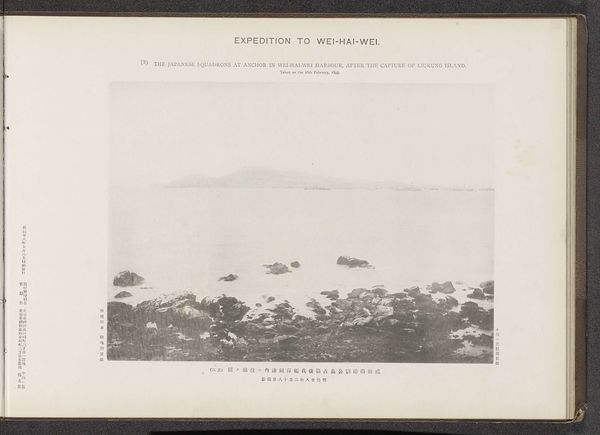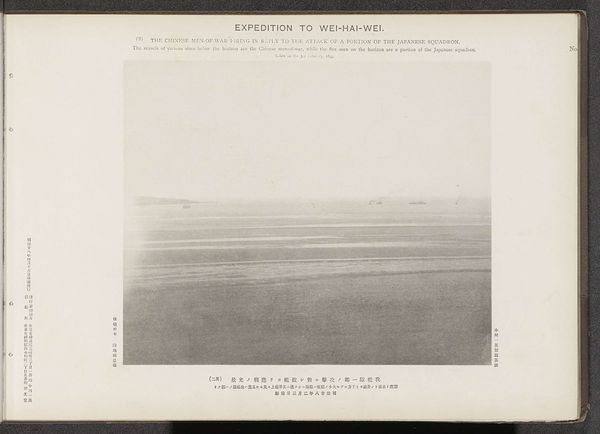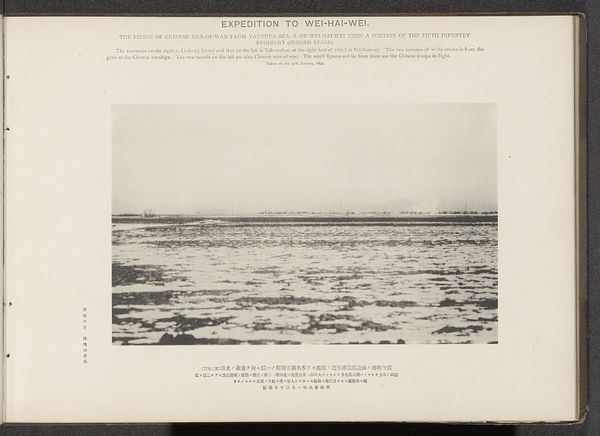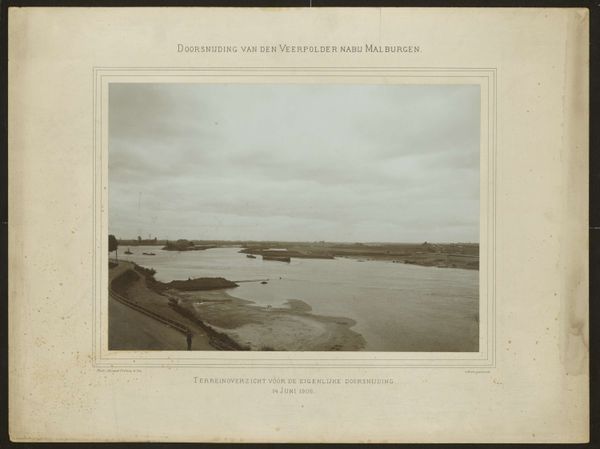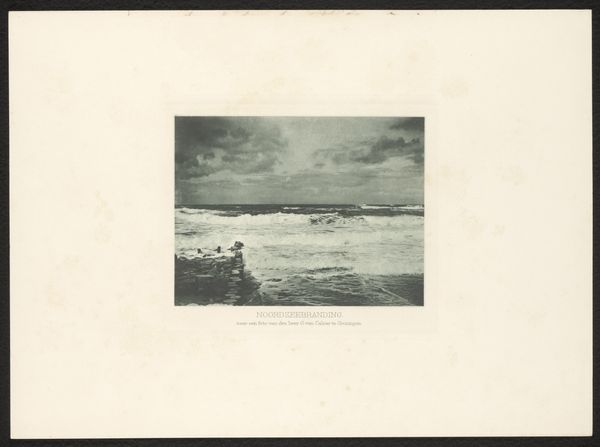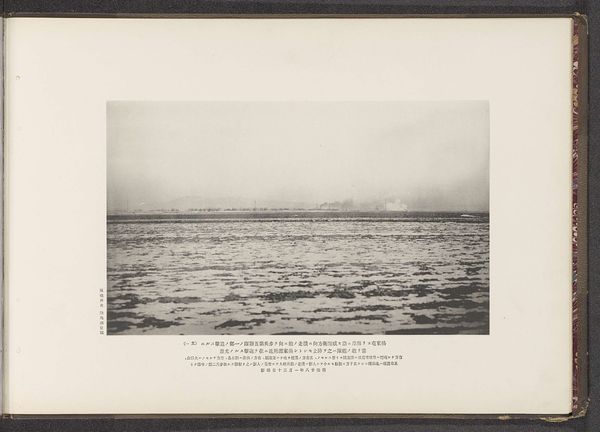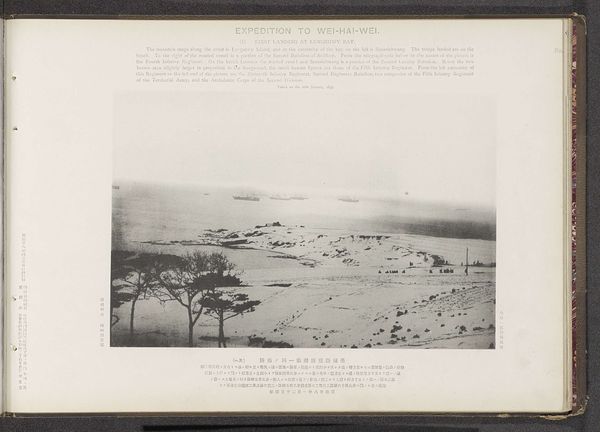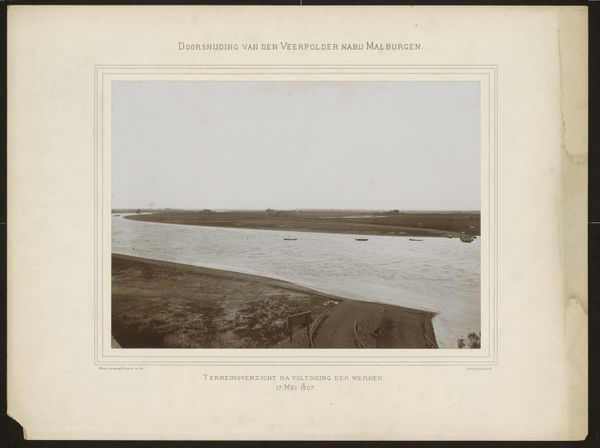
The Japanese squadrons at anchor in Wei-Hai-Wei harbour, after the capture of Liukung Island Possibly 1895
print, photography, albumen-print
asian-art
landscape
photography
orientalism
modernism
albumen-print
Dimensions: height 205 mm, width 285 mm
Copyright: Rijks Museum: Open Domain
Curator: The work we are looking at, possibly dating back to 1895, presents "The Japanese squadrons at anchor in Wei-Hai-Wei harbour, after the capture of Liukung Island". This striking image comes to us from the Ordnance Survey Office, captured in an albumen print. Editor: There's a certain melancholy to the monochromatic tones. The arrangement of the vessels across the horizon generates an almost symmetrical framing that isolates them despite the scale of the sea itself. It emphasizes a visual dominance. Curator: Indeed, the stillness of the anchored ships provides a potent commentary on the conclusion of the battle, shifting our focus to the sociopolitical impact of Japanese expansion. The inclusion of this photographic print within the Survey Office archives allows us to investigate photography's role in the modern history of conflict, cataloging the expansion of colonial empires, and how it all informed global power dynamics. Editor: The composition guides your eye. It emphasizes the contrast between the rough texture of the rocks in the foreground and the smooth, almost ethereal quality of the water and sky beyond. A stark transition and quiet visual rhythm are emphasized through the vessels across the water line. The image feels very grounded, in some way, but it could almost be imagined instead. Curator: And this albumen print would have held specific symbolic power as it was widely circulated, helping to consolidate narratives of Imperial victories and Japanese naval strength both locally and internationally. Wei-Hai-Wei, now Weihai, then was key to the control of the Yellow Sea. It is important to consider this print, with the artist's selected details, within the broader context of modern Orientalism, photography, and shifting power dynamics in Asia. Editor: Examining it closer, the details preserved within the albumen print—that shimmering, almost watery effect given to both the ships and the distant horizon. It truly stands as an interesting study of photographic material within artistic structure. There's a palpable sense of calm, really, contrasting against the history that it denotes. Curator: Reflecting on this, I think the intersection of meticulous topographical recording and propagandistic narratives creates a complex work that really demonstrates the dual nature of much state-sponsored photography. Editor: I'll remember that contrasting element, that sense of balance achieved by asymmetry of scale, and I think its atmospheric power is certainly an insight.
Comments
No comments
Be the first to comment and join the conversation on the ultimate creative platform.
